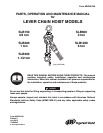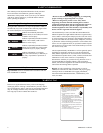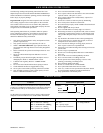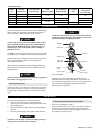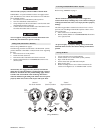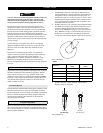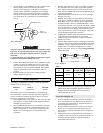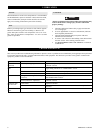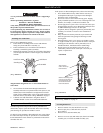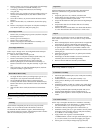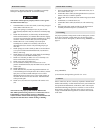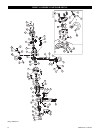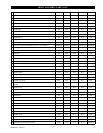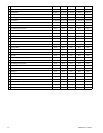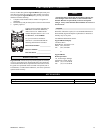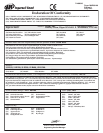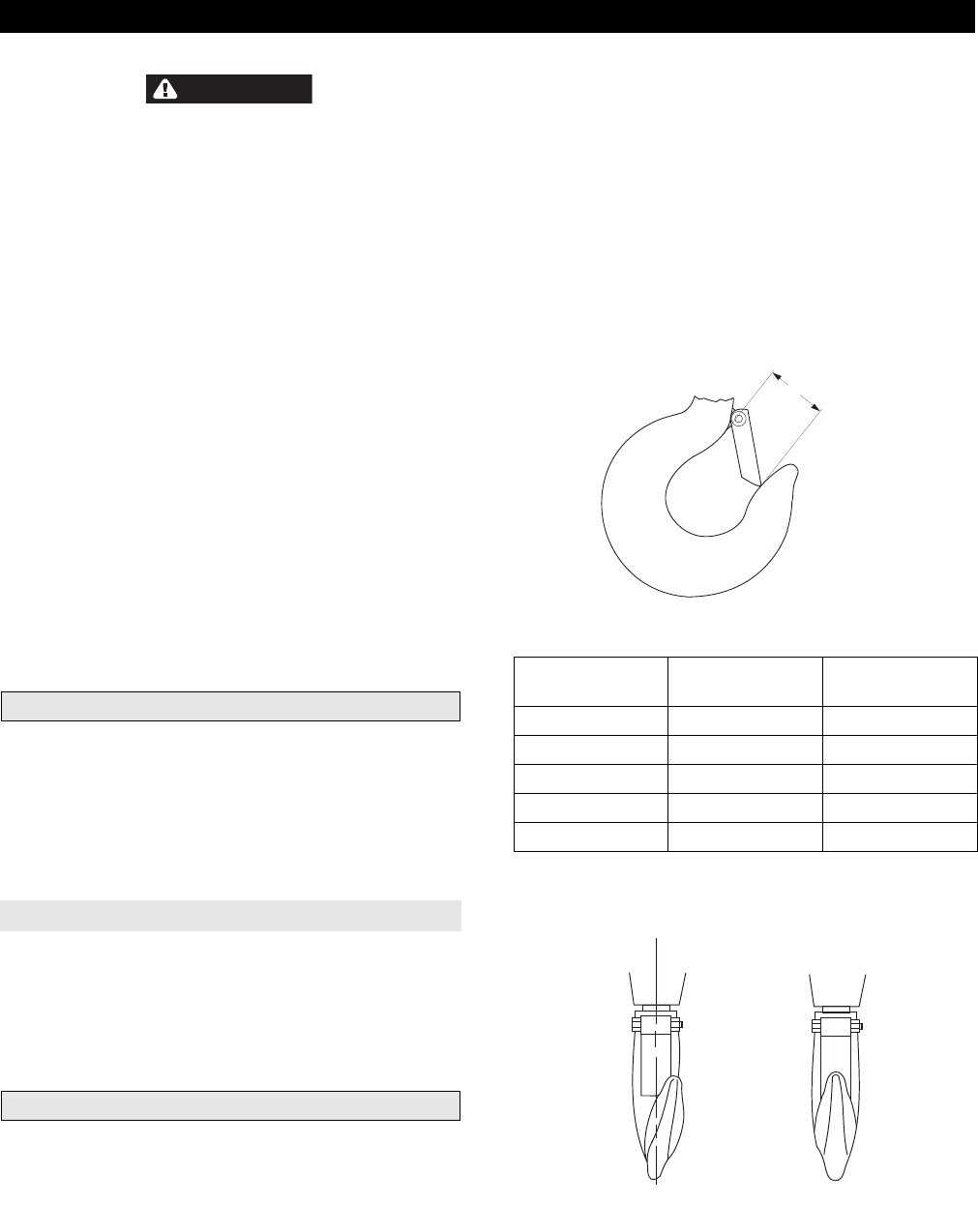
6 MHD56109 - Edition 9
INSPECTION
WARNING
• All new, altered or modified equipment should be inspected
and tested by personnel trained in safety, operation and
maintenance of this equipment to ensure safe operation at
rated specifications before placing equipment in service.
Frequent and periodic inspections should be performed on
equipment in regular service. Frequent inspections are visual
examinations performed by operators or service personnel and
include observations made during routine equipment operation.
Periodic inspections are thorough inspections conducted by
personnel trained in the safety, operation and maintenance of this
equipment. ASME B30.21 states inspection intervals depend
upon the nature of the critical components of the equipment and
severity of usage.
Careful inspection on a regular basis will reveal potentially
dangerous conditions while still in the early stages, allowing
corrective action to be taken before the condition becomes
dangerous.
Deficiencies revealed through inspection, or noted during
operation, must be reported to designated personnel trained in
safety, operation and maintenance of this equipment. A
determination as to whether a condition constitutes a safety
hazard must be decided, and the correction of noted safety
hazards accomplished and documented before placing equipment
in service.
Records and Reports
Inspection records, listing all points requiring periodic inspection
should be maintained for all load bearing equipment. Written
reports, based on severity of service, should be made on the
condition of critical parts as a method of documenting periodic
inspections. These reports should be dated, signed by the person
who performed the inspection, and kept on file where they are
readily available for review.
Load Chain Reports
Records should be maintained documenting the condition of load
chain removed from service as part of a long-range load chain
inspection program. Accurate records will establish a relationship
between visual observations noted during frequent inspections
and the actual condition of the load chain as determined by
periodic inspection methods.
Frequent Inspection
The lever chain hoist should be inspected at the beginning of each
shift. Visual inspections should also be conducted during regular
service for any damage or evidence of malfunction which appears
between regular inspections.
1. OPERATION. Check for visual signs or abnormal noises
which could indicate a potential problem. Check chain feed
through hoist and on 6 ton units the hook idler sheave. If
chain binds, jumps or is excessively noisy or “clicks,” clean
and lubricate the chain. If problem persists, chain may have
to be replaced. Do not operate hoist until all problems have
been determined and corrected.
2. HOOKS. Check for wear or damage, increased throat width,
bent shank or twisting of hook. Replace hooks that exceed
the throat opening discard width (15%) shown in Table 1
(refer to Dwg. MHP0040 on page 6) or are twisted (refer to
Dwg. MHP0111 on page 6). If hook latch snaps past tip of
hook, hook is sprung and must be replaced. Check hooks
swivel easily and smoothly. Repair or lubricate as necessary.
(Dwg. MHP0040)
3. HOOK LATCHES. Check operation of hook latches.
Replace if broken or missing.
(Dwg. MHP0111)
Table 1
Model No.
Throat Width
(mm)
Discard Width
(mm)
SLB150 29 31
SLB200 32 35
SLB300 35 39
SLB600 44 48.3
SLB1200 50 55
Throat Width
Twisted
DO NOT USE
Normal
Can Be Used



